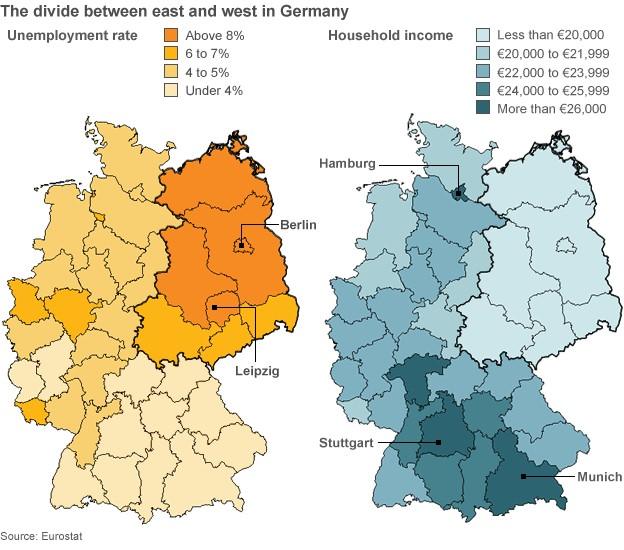Germany in figures
- Published
Germany, which holds federal elections on 22 September, is Europe's dominant country.
Its large and strong economy has allowed it to bankroll the bailouts that have kept some of its neighbours - and the euro - afloat.
The graphics below help explain why it is so dominant, and powerful - and also some of the problems it faces.
Economy
Germany's large population (the biggest in Europe) and vibrant economy add up to a GDP that far outweighs other European powers.
It also has the strongest export sector and the lowest unemployment of any big European country.

Immigration
The success of the economy and low unemployment - especially when compared to other EU countries - mean Germany has become a magnet for jobseekers. The number of immigrants has been rising and surpassed a million people in 2012 for the first time since 1995.
They come especially from former communist countries - as well as recession-hit Italy, Spain and Greece - and head for Berlin, the wealthy southern regions, and the industrial west.

Inequality
Despite Germany's strong economy, not everyone is doing well. Under wage restraint agreements, many people's incomes have barely grown in years, and many people who have jobs still require benefit top-ups.
There is also still a clear divide, 22 years since reunification, between incomes in the old East Germany, and the old West.
